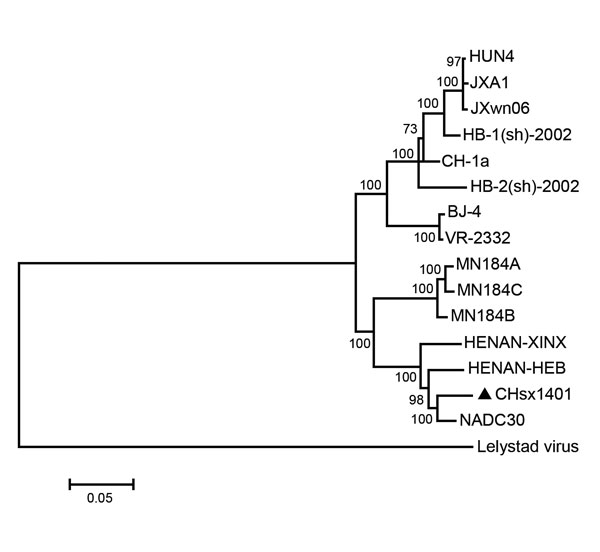Volume 21, Number 12—December 2015
Letter
NADC30-like Strain of Porcine Reproductive and Respiratory Syndrome Virus, China
Figure

Figure. Phylogenetic analysis of whole genomes of porcine reproductive and respiratory syndrome virus (PRRSV) CHsx1401 (triangle) (GenBank accession no. KP861625); representative prototype strain VR-2332 (U87392); isolates BJ-4 (AF331831), CH-1a (AY032626), HB-1(sh)/2002 (AY150312), and HB-2(sh)/2002 (AY262352) from China; highly pathogenic strains JXA1 (EF112445), JXwn06 (EF641008), and HUN4 (EF635006); strains MN184A (DQ176019), MN184B (DQ176020), MN184C (EF488739), and NADC30 (JN654459) from the United States; and recent strains HENAN-HEB (KJ143621) and HENAN-XINX (KF611905) from China. Prototype Lelystad virus (M96262) was used as the outgroup. The phylogenetic tree was constructed by using the distance-based neighbor-joining method with 1,000 bootstrap replicates in MEGA6 (http://www.megasoftware.net/). Numbers along branches are bootstrap values. Scale bar indicates nucleotide substitutions per site.
1These authors contributed equally to this article.